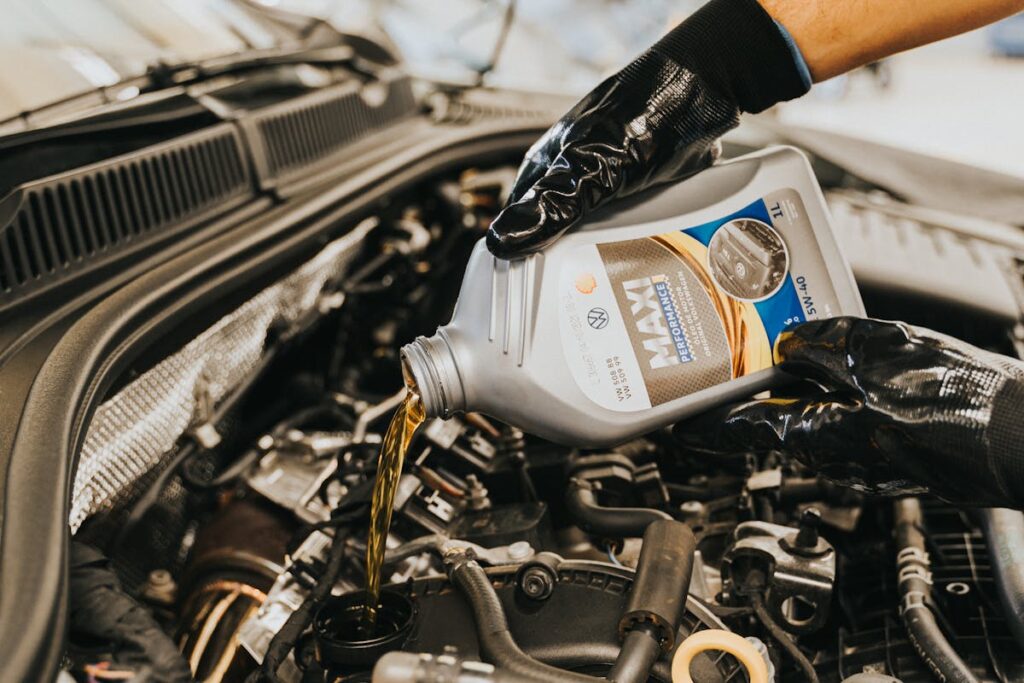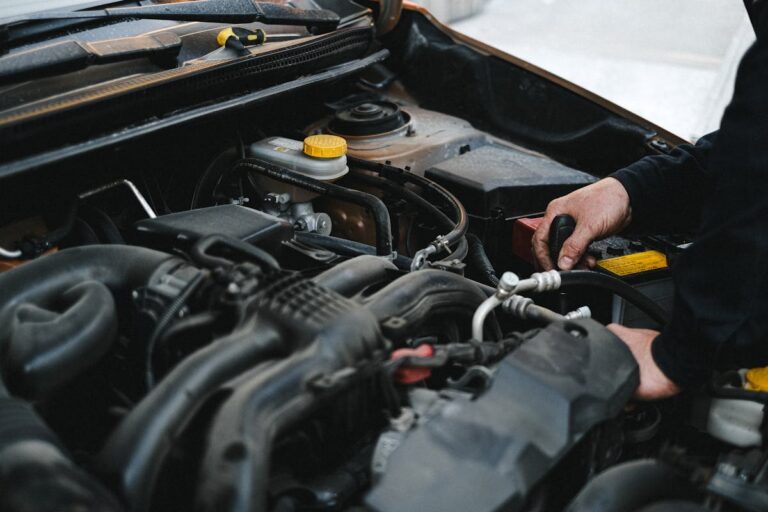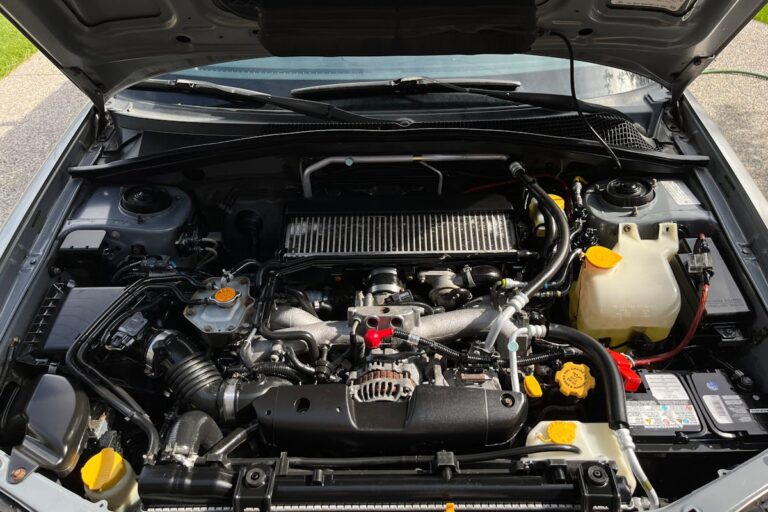Can Too Much Oil Cause Low Oil Pressure
The connection between oil quantity and oil pressure in an engine is a topic that can often lead to confusion and misconceptions. While it might seem counterintuitive, an excess of oil can actually result in a decrease in oil pressure. This is due to a variety of factors, including the interference of the crankshaft and the creation of foam, both of which can considerably reduce the oil’s ability to efficiently lubricate engine components. This seemingly paradoxical situation invites further exploration to fully understand the mechanics behind it.
Understanding Oil Pressure Basics
To fully grasp the issue of oil pressure in a vehicle, one must first understand the basic principles of oil pressure. Fundamentally, oil pressure is the measure of resistance encountered by engine oil as it circulates through a vehicle’s engine. This is influenced by several factors, with key ones being oil viscosity and the presence of oil additives.
Oil viscosity, or the thickness and fluidity of the oil, plays an essential role in oil pressure. High viscosity oil, being thicker, will create more resistance, thereby increasing oil pressure. Conversely, low viscosity oil, being thinner, will generate less resistance, leading to decreased oil pressure.
Oil additives, on the other hand, can alter the characteristics of the engine oil, influencing oil pressure either positively or negatively. For instance, viscosity index improvers are additives that expand with heat, thickening the oil and maintaining its viscosity at higher temperatures. This can help maintain or increase oil pressure. Conversely, some additives can decrease oil pressure by reducing the oil’s viscosity or by causing degradation of the oil.
Understanding these concepts is a prerequisite for comprehending the broader question: Can too much oil cause low oil pressure?
The Role of Oil in Engines
In any internal combustion engine, oil serves three primary functions that are integral to the engine’s performance and longevity. To begin with, it provides lubrication to the moving parts, thereby reducing friction and wear. The lubrication effectiveness is largely dependent on the oil’s viscosity, which refers to the oil’s resistance to flow.
The viscosity of oil plays a fundamental role in its performance within the engine. High-viscosity oils are thicker, enabling them to adhere more effectively to engine components and provide a robust layer of lubrication. Conversely, low-viscosity oils are lighter and can circulate more rapidly, ensuring critical engine parts are lubricated quickly after startup.
Additionally, oil acts as a coolant, absorbing heat from the engine’s components and transporting it away to maintain ideal operating temperatures. The viscosity of the oil can influence its heat absorption capacity.
Lastly, oil helps to clean the engine by suspending contaminants and carrying them to the oil filter, thereby preventing the build-up of sludge and varnish. The ability to transport these contaminants is again influenced by the oil’s viscosity. In conclusion, the viscosity and lubrication effectiveness of oil are key to its multipurpose role in engines.
Common Misconceptions About Oil
There exists a prevalent misunderstanding that an overfill of oil does not lead to any significant mechanical issues; however, this notion is fundamentally flawed. The veracity concerning oil pressure is often obfuscated by unverified information leading to misconceptions. Debunking these myths surrounding oil usage, particularly in the context of pressure and quantity, is essential for peak engine performance and longevity.
Oil Overfill: Problems Arise
Contrary to popular belief, an overabundance of oil in your vehicle’s engine can lead to numerous complications, including low oil pressure. This counterintuitive phenomenon can be attributed to the fact that every engine has a specific oil capacity designed for peak performance. Exceeding this capacity can result in turbulence within the oil, creating froth or foam.
This foamy substance, unlike pure oil, contains air bubbles. These bubbles are compressible and consequently, when the oil pump tries to circulate this froth, the pressure generated is less effective. The pressure gauge may then indicate a drop in oil pressure, misleading the vehicle’s operator into believing that the engine is low on oil.
Moreover, the excess oil can overflow into areas where it’s not supposed to be, such as the crankcase. This can lead to oil contamination and dilution, further degrading the oil’s quality and its ability to lubricate and cool the engine effectively.
Truth About Oil Pressure
Despite many prevailing misconceptions, oil pressure in a vehicle’s engine does not solely rely on the quantity of oil present. It is a complex interplay of various factors, including the oil viscosity, the condition of the oil pump, and the engine’s overall health.
Oil viscosity is a crucial factor in maintaining ideal oil pressure. Higher viscosity oils, often thicker and more resistant to flow, can generate higher pressure at a given pump speed. However, excessively high viscosity can lead to inefficient oil flow and increased engine wear. On the other hand, lower viscosity oils, while promoting better flow, may not provide sufficient pressure under high load or high-temperature conditions.
The pressure gauge provides an essential indication of the prevailing oil pressure within the engine. However, the gauge reading is a net result of multiple factors, not just the quantity of oil. A low reading can indicate problems such as worn bearings, a failing oil pump, or even a malfunctioning pressure gauge itself. As a result, understanding oil pressure requires a detailed, analytical approach, considering the viscosity of the oil, the efficiency of the oil pump, and the overall engine condition.
Myths Surrounding Oil Usage
Recognizing the intricate interplay of factors affecting oil pressure in a vehicle’s engine, one cannot overlook the myriad of misconceptions that surround the topic of oil usage. The subtleties of these oil myths often lead to misguided actions, potentially causing adverse effects on engine performance and longevity.
Let’s demystify some of these common misconceptions:
- More Oil Equals Better Lubrication: This is incorrect. Excessive oil can cause increased pressure, leading to seal damage or even engine failure. Oil levels should always be kept within the manufacturer’s recommended range.
- Synthetic Oil Causes Seal Leaks: This is one of those oil myths that continue to persist. In reality, synthetic oil doesn’t cause leaks; it simply exposes pre-existing conditions in the seals.
- Changing Oil Brands Harms Engine: There’s no factual evidence to back this claim. As long as the oil meets the vehicle’s specifications, it should not cause any harm.
- Oil Never Wears Out, Just Gets Dirty: Contrary to this myth, oil does degrade over time, losing its effectiveness to lubricate and cool the engine.
Understanding these myths and oil facts is essential in maintaining peak engine performance and longevity.

Consequences of Overfilling Oil
An excess of oil in an engine’s compartment can lead to a myriad of problems, chief among them being a decrease in oil pressure. This issue arises when the oil level surpasses the engine’s oil capacity, causing an overflow. The excess oil can then flood the crankshaft as well as various other engine components, hindering their functionality and, in many cases, resulting in engine damage.
The heightened oil level can cause the rotating crankshaft to come into contact more frequently with the oil. This interaction leads to aeration of the oil, creating a frothy mixture that can greatly impede the oil’s ability to lubricate engine parts effectively. This scenario, in turn, causes increased friction and heat, which can ultimately lead to severe engine damage.
Moreover, an oil overfill can escalate pressure within the oil pan and push oil past the seals and gaskets designed to keep it within the engine. Leakage of oil in this manner can lead to harm to other parts of the vehicle, such as the exhaust and catalytic converter. Such consequences highlight the importance of adhering to the manufacturer’s specified oil capacity to prevent overfilling and its associated problems.
How Excess Oil Lowers Pressure
The impact of overfilling engine oil on pressure mechanisms necessitates a thorough analysis. Excess oil can disrupt the ideal functioning of various engine components, leading to reduced oil pressure. To understand this, we must first comprehend the fundamentals of oil pressure and the adverse implications of its reduction due to overfilled oil.
Oil Overfilling Consequences
Overfilling your engine with oil can paradoxically lead to lowered oil pressure, a consequence that often surprises vehicle owners. Excess oil can create a harmful environment within your engine, affecting its performance and longevity.
The harmful effects are fundamentally four-fold:
- Aeration: Overfilled oil can get aerated due to rapid churning in the crankshaft. The aerated oil is less dense, which lowers the oil pressure as it flows less effectively.
- Oil Viscosity: Excess oil can alter the oil viscosity, making it thicker and less effective at lubricating the engine parts. Thicker oil flows slower, reducing the oil pressure.
- Oil Additives Deterioration: An overfilled oil pan can lead to accelerated degradation of oil additives. These additives help maintain oil viscosity and protect against corrosion. Their degradation compromises the lubrication and protective functions of the oil, impacting oil pressure.
- Engine Damage: Finally, the excess oil can cause parts like the crankshaft to dip into the oil in the oil pan and whip it into a foam. This foam is less effective at lubricating, causing potential engine damage and lowered oil pressure.
Understanding these consequences can help prevent engine damage and maintain ideal oil pressure.
Understanding Oil Pressure Mechanism
To fully grasp why excess oil can lead to low oil pressure, it’s important to understand the fundamental workings of the oil pressure mechanism within an engine. The oil pressure mechanism is a complex system that depends on a delicate balance of oil quantity, oil viscosity, and engine temperature to function effectively.
The oil pump, driven by the engine’s crankshaft, circulates oil throughout the engine. This lubricates the engine’s moving parts, reduces friction, and cools the engine. The pressure gauge indicates the force at which the oil moves within the engine, measured in pounds per square inch (PSI). This pressure is significant for the effective functioning of an engine.
Oil viscosity, which refers to the thickness and fluidity of the oil, plays an important role in maintaining this pressure. Higher viscosity oils create more resistance to flow, thereby increasing oil pressure. Conversely, lower viscosity oils flow more easily, reducing oil pressure.
Excess oil can cause foaming, which reduces the oil’s viscosity, leading to lower oil pressure readings on the pressure gauge. As a result, maintaining the correct oil level and viscosity is critical to achieving the right balance of oil pressure within an engine.
Signs of Low Oil Pressure
Despite common assumptions, low oil pressure is not strictly a result of low oil. Various factors can lead to this issue, with low pressure causes often being more complex than a simple lack of fluid. To identify and diagnose these issues, one must first understand the primary oil pressure indicators.
- Warning Light: The most common indicator is the oil pressure warning light on the dashboard. If it stays lit, it’s usually a sign of low oil pressure.
- Engine Noise: A knocking or ticking noise from your engine can indicate inadequate lubrication due to low oil pressure.
- Overheating Engine: Low oil pressure can cause the engine to overheat, as the oil isn’t sufficiently lubricating and cooling the engine components.
- Decreased Engine Performance: You may notice a reduction in your vehicle’s performance or fuel economy due to the strain low oil pressure places on the engine’s operation.
Understanding these signs and their underlying causes is essential in maintaining a highly functioning engine. It is important to respond promptly to these symptoms to prevent further engine damage and guarantee a smooth and efficient drive.
Proper Oil Maintenance Tips
Regularly maintaining your vehicle’s oil is an essential aspect of guaranteeing peak engine performance. This task is not just about the frequency of oil changes, but also about understanding the viscosity importance of the oil used.
Oil viscosity, measured regarding its resistance to flow, is an indicator of how well the oil can lubricate the engine. Higher viscosity oils provide better lubrication but may cause the engine to work harder, potentially leading to lower oil pressure. Conversely, lower viscosity oils might not deliver adequate lubrication, increasing engine wear and tear.
Oil changes should be conducted as per the manufacturer’s suggestion, generally every 3,000 to 5,000 miles. However, this can vary based on the type of oil used, driving conditions, and the age and model of the vehicle. Regular oil changes remove engine contaminants, thereby preventing the buildup of sludge that can reduce oil pressure.
It is also vital to use the correct grade of oil as specified by the vehicle’s manufacturer. The right oil guarantees peak engine function and maintains oil pressure. By adhering to these maintenance tips, you can prolong your vehicle’s lifespan and maintain robust oil pressure.
Debunking Oil-Related Myths
Many misconceptions circulate in the car maintenance world, especially when it comes to engine oil. These myths can lead car owners to make ill-informed decisions about their vehicles, resulting in unnecessary damage or wear.
- Thicker oil is always better: Oil viscosity refers to the thickness of the oil. Contrary to popular belief, thicker oil is not always better. In fact, using oil that is too thick can cause increased friction and heat, potentially damaging your engine.
- Oil additives improve engine performance: While some oil additives can enhance engine performance, not all do. The indiscriminate use of additives can lead to an imbalance in your engine’s oil formulation, causing more harm than good.
- All engine oils are the same: This is untrue. Different oils are formulated for different engines, operating conditions, and temperatures. Choosing the right oil for your car is essential for its longevity and performance.
- Oil never wears out, it only gets dirty: Oil does indeed wear out over time due to heat and pressure. This leads to a reduction in viscosity and the oil’s ability to lubricate, cool, and clean the engine. Hence, regular oil changes are critical.
Frequently Asked Questions
What Type of Oil Is Best for High-Performance Engines?
For high-performance engines, synthetic oil is ideal due to its superior resistance to heat and wear. Its high viscosity guarantees optimum lubrication, reducing engine friction and enhancing overall performance and longevity.
Can a Faulty Oil Filter Cause Low Oil Pressure?
Yes, a faulty oil filter can indeed cause low oil pressure. Inadequate filtration can lead to oil contamination, causing viscosity changes and reduced lubrication, which results in decreased oil pressure. Regular oil filter troubleshooting is recommended.
How Often Should I Check My Cars Oil Level?
To guarantee peak vehicle performance, it’s recommended to check your car’s oil level at least once a month, or before a long journey. Regular checks allow early detection of potential oil-related issues and overfills.
Does Weather Affect Oil Pressure in a Vehicle?
Yes, weather can affect oil pressure in a vehicle. Oil viscosity changes with temperature fluctuations, causing pressure variations. Cold temperatures thicken oil, increasing pressure, while hot conditions can thin oil, potentially decreasing pressure. Regular monitoring is advisable.
Can Low Oil Pressure Damage the Cars Engine?
Yes, low oil pressure can damage a car’s engine. Insufficient pressure affects oil viscosity, leading to inadequate lubrication. This can cause accelerated engine wear, resulting in potential long-term damage and decreased engine performance over time.






